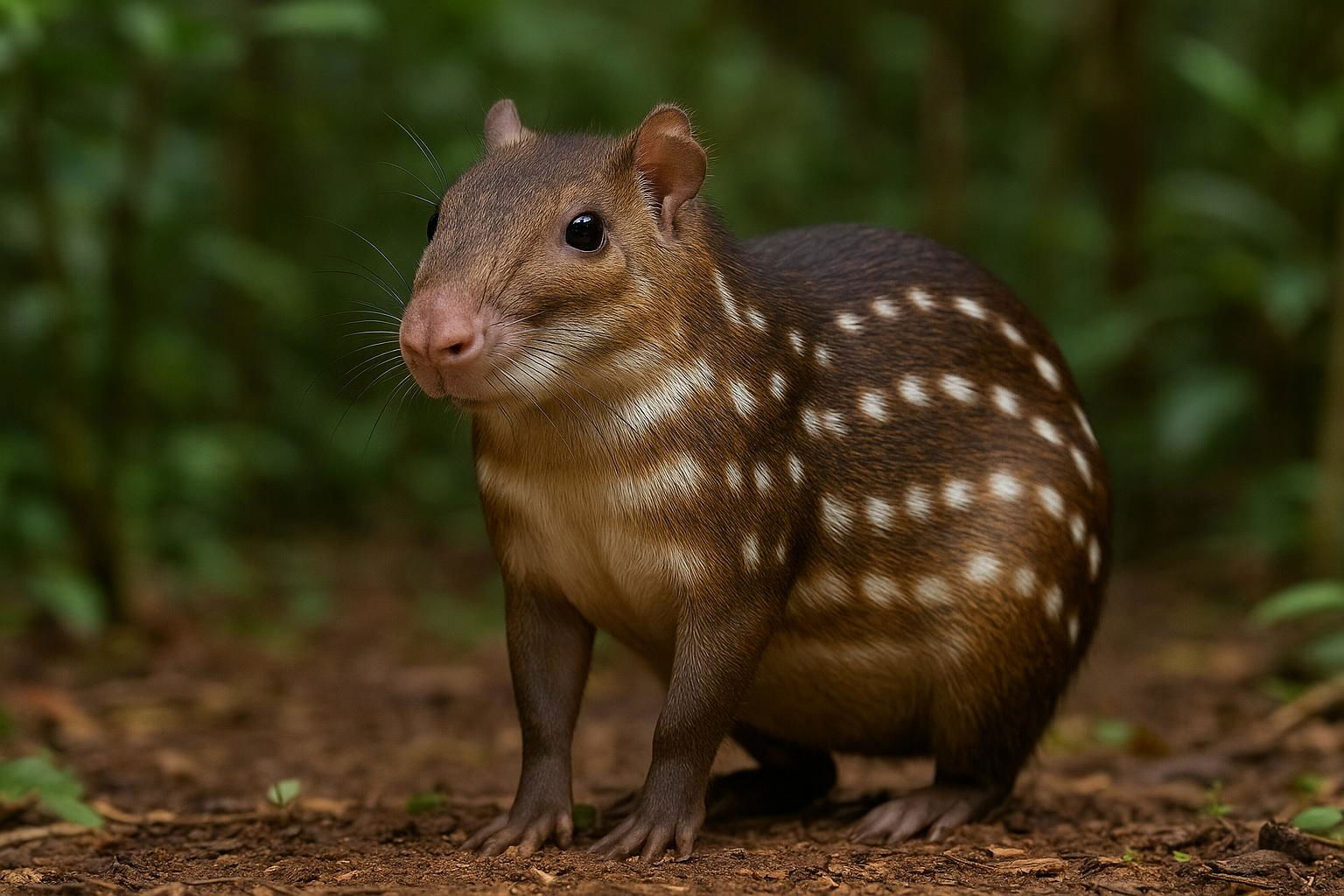
Spotted Paca
Cuniculus paca
The Spotted Paca (Cuniculus paca) is a nocturnal rodent native to Central and South America, known for its distinctive appearance and ecological significance. It features a robust, stocky body covered in a coarse, brownish coat adorned with conspicuous white or yellowish spots—an effective camouflage against the dappled forest floor. Adult pacas typically weigh between 6 to 12 kilograms and can grow up to 80 centimeters in length, including their short tail.
Adapted for a life primarily in tropical rainforest habitats, the Spotted Paca is well-equipped with powerful hind limbs that aid in swimming and fleeing from predators. It has cheek pouches, which it uses to carry food. Pacas have a specialized diet that consists mainly of fruits, seeds, and tubers, making them important seed dispersers in their ecosystems. Their burrowing behavior contributes to soil turnover and aeration, which can enrich the forest floor.
Despite being solitary creatures, they communicate through low, guttural vocalizations and scent markings. The Spotted Paca plays a pivotal role both as prey for larger predators and as a contributor to forest ecology. However, they face threats from hunting and habitat destruction, which requires conservation efforts to ensure their populations remain stable.

 All Species & Breeds
All Species & Breeds
 Highland Cattle
Highland Cattle
 Miniature Donkeys
Miniature Donkeys
 All Species Directory
All Species Directory
 Highland Cattle in Virginia
Highland Cattle in Virginia
 Miniature Donkeys in Texas
Miniature Donkeys in Texas












